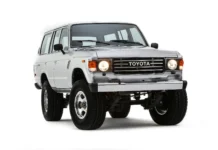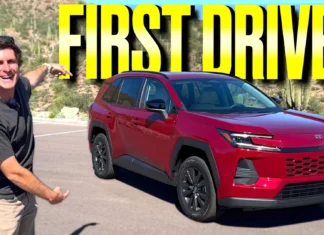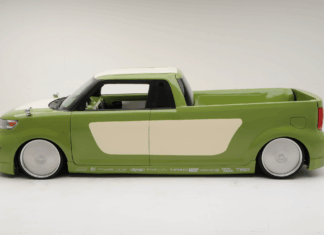
As automakers across the industry downsized toward V-6 and four-cylinder engines throughout the past decade, Toyota steadfastly stuck to large displacement, naturally-aspirated engines in its trucks. Take the 4.6-liter and 5.7-liter powertrains we have now — can you remember a time when they weren’t available in either a Sequoia, Land Cruiser, Tundra, Lexus GX 460 or LX 570? All these models have been using effectively the same engines for the past decade or more, and you’d be forgiven for thinking Toyota will just keep making them forever, because they seem to last forever. And that’s to say nothing of the high-strung 5.0-liter engines Lexus uses in its most powerful models.
Nothing lasts forever, though, and that appears to be the case with the venerable Toyota V-8s.
A new report from The Drive suggests the end is imminent for the engines that have been a mainstay of full-size Toyota trucks and SUVs for the past two decades. Over the next three years, the Japanese automaker will ramp down production of its bigger powertrains, in favor of something smaller and more efficient. Specifically, the general consensus lands on a twin-turbocharged 3.5-liter V-6 as the prime candidate to consign Toyota’s robust, yet aging engines to the history books.
Over the past couple years, we’ve reported several times that the V-8 likely wouldn’t make it another generation in the Land Cruiser, Tundra, Sequoia and LX 570. The Drive’s source says that Toyota’s Huntsville, Alabama engine plant will stop production within the next 12 to 18 months. Beyond that, the Tahara plant in Japan will end its tenure as the last remaining Toyota V-8 assembly line within around 2023. Toyota, for its part, did not comment whether the V-8 will in fact die or the timeline in which it would go out of production.

Winding down production after COVID-19
While Toyota’s plans don’t come as a huge surprise, the ongoing coronavirus pandemic is sure to throw a wrench in the timing. After the shutdown at the Alabama plant, Toyota should have enough parts to build 30,000 more V-8 engines, according to the unnamed source. That will supply the remaining run for the current Tundra and Sequoia, which are both assembled in the U.S. (in Texas and Indiana, respectively). As the final V-8s roll off the assembly line, the plant will convert to building the new turbo V-6 powertrains.
The Tahara plant, where Toyota builds the Land Cruiser, will likely continue to produce V-8 for the company’s lower-volume models. For instance, the Japanese-market Century limousine, which uses a hybrid V-8, and whether the Lexus LC F will actually get a twin-turbo V-8 engine is still a bit of a question mark, despite ongoing rumors. Either way, the Toyota V-8 engine as we know it here in the U.S. looks like it could end sooner than some would have thought.
Toyota doesn’t typically move at light speed when it comes to using new powertrains, but that’s exactly the reason why its V-8s are so well-respected. On the whole, the engines are (by most accounts) bulletproof. The problem is that they’re also thirsty, and the trucks these V-8s power return some of the worst fuel economy in their respective classes. In the wake of tightening emissions regulations, that can’t go on. So while these are strictly rumors for now, the question remains not if Toyota will drop its V-8 powertrains, but when.
























